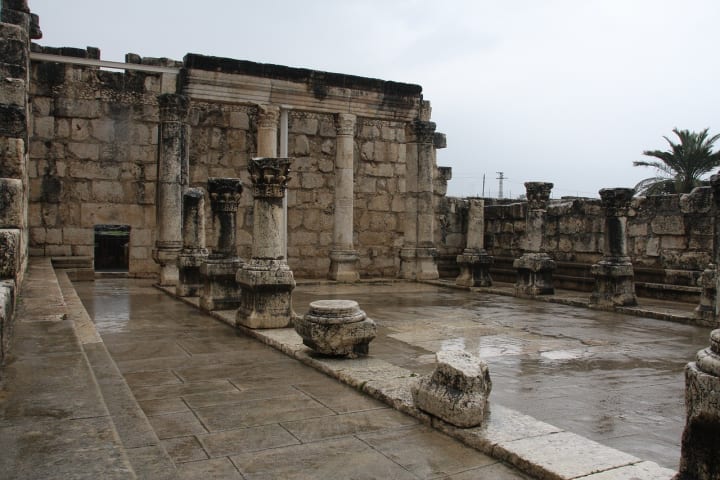The most incredible archaeological finds.
Incredible Stories
The most incredible archaeological finds.
No. 10: Noah's Ark. If the story of Noah's ark in the Bible is a true event, where is the ark today? Recently, a group of evangelical Christians claimed to have discovered remains in Turkey hidden beneath layers of volcanic debris, exactly where the Bible says Noah's ark rested. Archaeologists, however, dismiss these claims as nonsense. Paul Zamansky, an archaeologist specializing in the Middle East, says he is unaware of any expedition that sought the ark and found it. Nevertheless, a group called Noah's Ark International Ministries insists that the ark is hidden in plain sight, although they admit they are not 100 percent sure. According to them, the ark was buried at an astonishing 13,000 feet above sea level near the top of Mount Ararat in Turkey. The group claims to have found wooden compartments that match the description of the animal cages mentioned in the Bible, but they have not presented any concrete evidence and are keeping the exact location of the discovery a secret. Although the Book of Genesis indicates that the ark landed near the ancient kingdom of Urartu in what is now Turkey, there is no verifiable evidence that the biblical flood occurred in the area. Most scholars believe that if the ark were real, then Noah and his family would have reused the wood to build houses, and that early Christians would have built shrines to commemorate the site where they believed Noah's ark landed. This discovery is still highly controversial and we may never know for sure until the giant ship is unearthed. What are your thoughts? Do you think we will ever find Noah's Ark? Please let me know in the comments.

Number nine: The House of Peter. The Bible provides limited details about Jesus Christ's life as a child, focusing mostly on his adult years. However, there are some clues that shed light on certain aspects. For instance, we know that Jesus spent most of his adult life in Capernaum, a close-knit fishing community on the Sea of Galilee. It was in this village that Jesus established his own ministry, starting at a local synagogue and recruiting fishermen to be his disciples. Over the years, after the death of Christ, pilgrims flocked to the fishing village of Capernaum, seeking the site where Christ's ministry began. Among the ruins, there was once a well-preserved ancient synagogue believed to be the place where Jesus first taught. But there was another significant building in the village that researchers desperately wanted to find—the house of Peter, Jesus' stepfather. According to the Bible, Peter's house was in Capernaum, as Jesus must have had a home there unless he lived on the streets. Italian excavators working in Capernaum recently uncovered the remains of a small dwelling buried beneath the foundation of a Byzantine church. The house appears to date back to the first century BC and has a simple layout, consisting of several small rooms surrounding a central courtyard. At first glance, the house seems ordinary for that period, but closer inspection reveals renovations and unusual features. The main room, for instance, was plastered, a rarity 2,000 years ago as plaster was expensive. Additionally, the pottery found in the house suggests a transformation from a private residence to a place for community gatherings. This discovery leads archaeologists to speculate that this might have been Jesus' childhood home, which he later adapted for early Christian meetings. While it is challenging to prove the theory beyond a reasonable doubt.

the discovery of this house provides significant evidence supporting the claim. The proximity of the house to the ancient synagogue, where Jesus is known to have taught, further strengthens the connection.
The identification of Peter's house in Capernaum holds great significance for Christians, as Peter is considered one of the most prominent disciples and a key figure in the early Christian community. The house could have served as a gathering place for early believers and a site of important events in the life of Jesus.
However, it is important to note that archaeological discoveries in this context often involve a degree of interpretation and speculation. While the evidence strongly suggests that the uncovered house could be Peter's house, conclusive proof is challenging to obtain. Historical records from that time are scarce, and it is difficult to definitively link the house to Jesus and Peter without additional corroborating evidence.
Nonetheless, the discovery of this house provides valuable insights into the living conditions and social dynamics of the time, shedding light on the early stages of Christianity. It also offers a tangible connection to the historical context in which Jesus lived and carried out his ministry.
As research and excavation continue in Capernaum and other biblical sites, further discoveries may contribute to our understanding of the life and teachings of Jesus Christ. These findings can enrich our knowledge of ancient history and offer spiritual and historical insights to believers and scholars alike.
It's over, liars, and I'll continue to update the remaining eight mysteries later. Have fun with life!
About the Creator
GuyDussek
I love to write and I like to output articles that surprise me, so if you like my articles, follow me!
Enjoyed the story? Support the Creator.
Subscribe for free to receive all their stories in your feed. You could also pledge your support or give them a one-off tip, letting them know you appreciate their work.







Comments
There are no comments for this story
Be the first to respond and start the conversation.